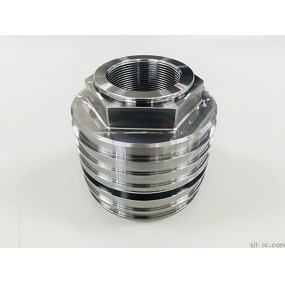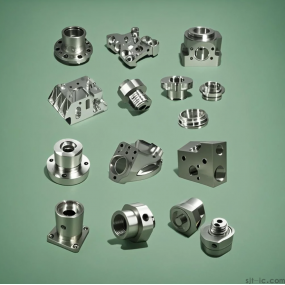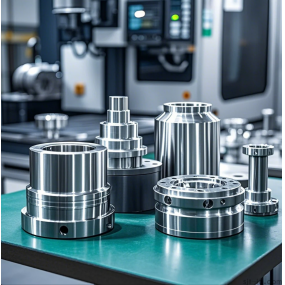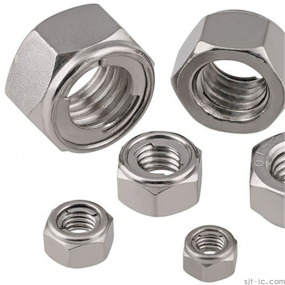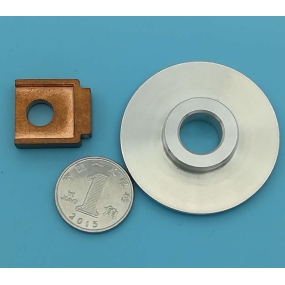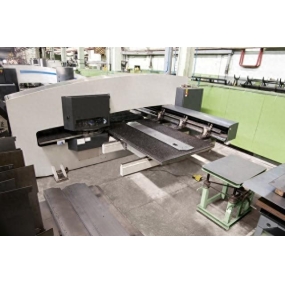The function of the trimming stamping die is to cut the stretched sheet metal along the process curve to obtain the required edge size. The trimming die should be made in place during the manufacturing process, and if the sheet metal is not properly ground, various problems such as sheet metal rebound and deformation may occur.
The main drawbacks of trimming molds are:
1. Burr: Refers to the sharp corners left on the cross-section of the stamped product during sheet metal cutting. Burrs are inevitable when the sheet metal is separated and cannot be eliminated, but can only be reduced. Therefore, there is a certain acceptance principle for the disadvantage of burrs in stamped parts, that is, the length should not exceed 1/3 of the material thickness, and it should not affect the safety of this process, the next process, and the end user. Reason for burr occurrence: chipping of the trimming blade block; The clearance between the convex and concave die edges is large; Small gaps between convex and concave mold edges, as well as edge trimming of vertical edges.
2. Edge trimming and punching deformation: This drawback manifests as edge trimming, warping after punching, hole deformation, etc. The main reasons are analyzed as follows: insufficient pressing force of the pressing core; The distance between the pressing core and the trimming edge is too large; Blade damage or unreasonable gaps.  3. Waste does not slide down: The treatment of edge trimming mold waste is very important, as it often leads to mold damage, low production power, and high safety hazards due to the inability and difficulty of discharging waste.
3. Waste does not slide down: The treatment of edge trimming mold waste is very important, as it often leads to mold damage, low production power, and high safety hazards due to the inability and difficulty of discharging waste.
The reasons for the above problems are mainly as follows: unreasonable design of waste knives; The slope of the sliding board is small; The waste blade has a small empty back; Dry with other components of the mold, such as whether the mold installation screws are in the sliding direction.
4. Material slag damage: The problem of material slag damage is caused by the introduction of material slag into the subsequent process during mold trimming, resulting in damage to the workpiece. The frequency of damage is high, which seriously affects the quality and production power of the workpiece. Severe damage requires sheet metal rework, causing great complaints from subsequent customers and increasing production costs, reducing the market competitiveness of the entire vehicle.
The primary reason is that the gap between the OP20 trimming edge is too tight, resulting in material extrusion and slag during the trimming process; The cutting edge is inserted too deeply, resulting in edge trimming and material residue; Long term wear of the blade leads to magnetism, causing the slag to adhere to the workpiece; The material resistance of the sheet metal itself is poor, resulting in material slag.
Understanding the manifestations and mechanisms of the shortcomings of edge trimming stamping molds can to some extent guide on-site production. Only by controlling every process to ensure the quality of stamped parts is qualified, can we produce products with qualified quality and customer recognition.
This article is from EMAR Mold Co., Ltd. For more EMAR related information, please click on www.sjt-ic.com,


 Spanish
Spanish Arabic
Arabic French
French Portuguese
Portuguese Belarusian
Belarusian Japanese
Japanese Russian
Russian Malay
Malay Icelandic
Icelandic Bulgarian
Bulgarian Azerbaijani
Azerbaijani Estonian
Estonian Irish
Irish Polish
Polish Persian
Persian Boolean
Boolean Danish
Danish German
German Filipino
Filipino Finnish
Finnish Korean
Korean Dutch
Dutch Galician
Galician Catalan
Catalan Czech
Czech Croatian
Croatian Latin
Latin Latvian
Latvian Romanian
Romanian Maltese
Maltese Macedonian
Macedonian Norwegian
Norwegian Swedish
Swedish Serbian
Serbian Slovak
Slovak Slovenian
Slovenian Swahili
Swahili Thai
Thai Turkish
Turkish Welsh
Welsh Urdu
Urdu Ukrainian
Ukrainian Greek
Greek Hungarian
Hungarian Italian
Italian Yiddish
Yiddish Indonesian
Indonesian Vietnamese
Vietnamese Haitian Creole
Haitian Creole Spanish Basque
Spanish Basque

